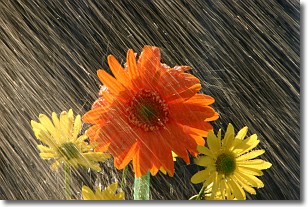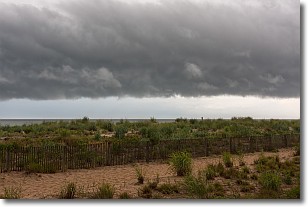Weather Alert in Indiana
Flood Warning issued June 20 at 9:26PM EDT until June 22 at 2:00AM EDT by NWS Indianapolis IN
AREAS AFFECTED: Parke, IN; Vermillion, IN; Vigo, IN
DESCRIPTION: ...The Flood Warnings continue for the following rivers and locations in Indiana...Illinois... White River at Elliston and Edwardsport. Wabash River at Lafayette, Riverton, and Hutsonville Legacy Power Plant Site ...The Flood Warning is extended for the following river in Indiana... Wabash River at Montezuma. .Repeated rounds of showers and thunderstorms, including on June 18 and 19, plus dam releases of water upstream from Lafayette, brought new rises to area waterways. Lowland flooding on the Wabash River should end by late Saturday...earlier at most locations. Water levels on the White River at and downstream from Elliston will either cause lowland flooding or be very near bankfull through as late as Tuesday. Hot temperatures with meager chances of rain and plenty of sunshine well into next week will promote drainage and drying of soil. * WHAT...Minor flooding is occurring and minor flooding is forecast. * WHERE...Wabash River at Montezuma. * WHEN...Until early Sunday morning. * IMPACTS...At 14.0 feet, Several hundred acres of bottomlands along the right bank from the mouth of Sugar Creek to northern edge of Montezuma begin to flood. * ADDITIONAL DETAILS... - At 8:45 PM EDT Friday the stage was 14.1 feet. - Recent Activity...The maximum river stage in the 24 hours ending at 8:45 PM EDT Friday was 14.7 feet. - Forecast...The river is expected to fall below flood stage early tomorrow afternoon and continue falling and remain below flood stage. - Flood stage is 14.0 feet. - http://www.weather.gov/safety/flood
INSTRUCTION: Caution is urged when walking near riverbanks. Flooding is occurring or is imminent. Most flood related deaths occur in automobiles. Do not attempt to cross water covered bridges, dips, or low water crossings. Never try to cross a flowing stream, even a small one, on foot. To escape rising water find another route over higher ground. Additional information is available at www.weather.gov/ind. The next statement should be issued Saturday afternoon by around 200 PM EDT /100 PM CDT/.
Want more detail? Get the Complete 7 Day and Night Detailed Forecast!
Current U.S. National Radar--Current
The Current National Weather Radar is shown below with a UTC Time (subtract 5 hours from UTC to get Eastern Time).

National Weather Forecast--Current
The Current National Weather Forecast and National Weather Map are shown below.

National Weather Forecast for Tomorrow
Tomorrow National Weather Forecast and Tomorrow National Weather Map are show below.

North America Water Vapor (Moisture)
This map shows recent moisture content over North America. Bright and colored areas show high moisture (ie, clouds); brown indicates very little moisture present; black indicates no moisture.

Weather Topic: What is Precipitation?
Home - Education - Precipitation - Precipitation
 Next Topic: Rain
Next Topic: Rain
Precipitation can refer to many different forms of water that
may fall from clouds. Precipitation occurs after a cloud has become saturated to
the point where its water particles are more dense than the air below the cloud.
In most cases, precipitation will reach the ground, but it is not uncommon for
precipitation to evaporate before it reaches the earth's surface.
When precipitation evaporates before it contacts the ground it is called Virga.
Graupel, hail, sleet, rain, drizzle, and snow are forms of precipitation, but fog
and mist are not considered precipitation because the water vapor which
constitutes them isn't dense enough to fall to the ground.
Next Topic: Rain
Weather Topic: What are Shelf Clouds?
Home - Education - Cloud Types - Shelf Clouds
 Next Topic: Sleet
Next Topic: Sleet
A shelf cloud is similar to a wall cloud, but forms at the front
of a storm cloud, instead of at the rear, where wall clouds form.
A shelf cloud is caused by a series of events set into motion by the advancing
storm; first, cool air settles along the ground where precipitation has just fallen.
As the cool air is brought in, the warmer air is displaced, and rises above it,
because it is less dense. When the warmer air reaches the bottom of the storm cloud,
it begins to cool again, and the resulting condensation is a visible shelf cloud.
Next Topic: Sleet
Current conditions powered by WeatherAPI.com




